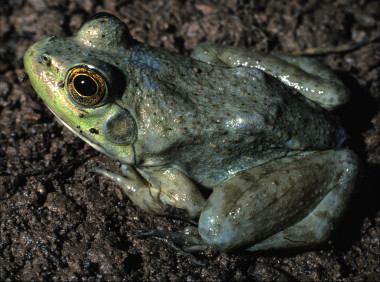Acaba de salir este volumen. Ir al enlace.





Marco Katzenbergerl, John Hammond, Helder Duarte, Miguel Tejedo, Cecilia Calabuig, Rick A. Relyea. PlosOne. Published: May 28, 2014. Ir al enlace.
 | Mediante experimentos en condiciones naturales los investigadores registraron cómo se transmiten las llamadas de apareamiento de la rana común, Pelophylax perezi, y la rana toro, Lithobates catesbeianus –especie invasora originaria de Norteamérica–, en dos tipos hábitats (terrestres y acuáticos) en siete localidades de la península ibérica. El análisis de los datos demuestra que los sonidos de baja frecuencia, como el canto de la rana toro, se transmiten con mayor eficacia. Leer más. |
Sometimes all it takes is fewer clicks. Scientists have discovered a new species of frog from Madagascar that stuck out in part because it «clicked» less during calls than similar species. Unfortunately the scientists believe the new species—dubbed the Ankarafa skeleton frog (Boophis ankarafensis)—is regulated to a single patch of forest, which, despite protected status, remains hugely threatened. Leer más.
The ancestors of today’s crocodiles colonised the seas during warm phases and became extinct during cold phases, according to a new Anglo-French study which establishes a link between marine crocodilian diversity and the evolution of sea temperature over a period of more than 140 million years. Leer más.






